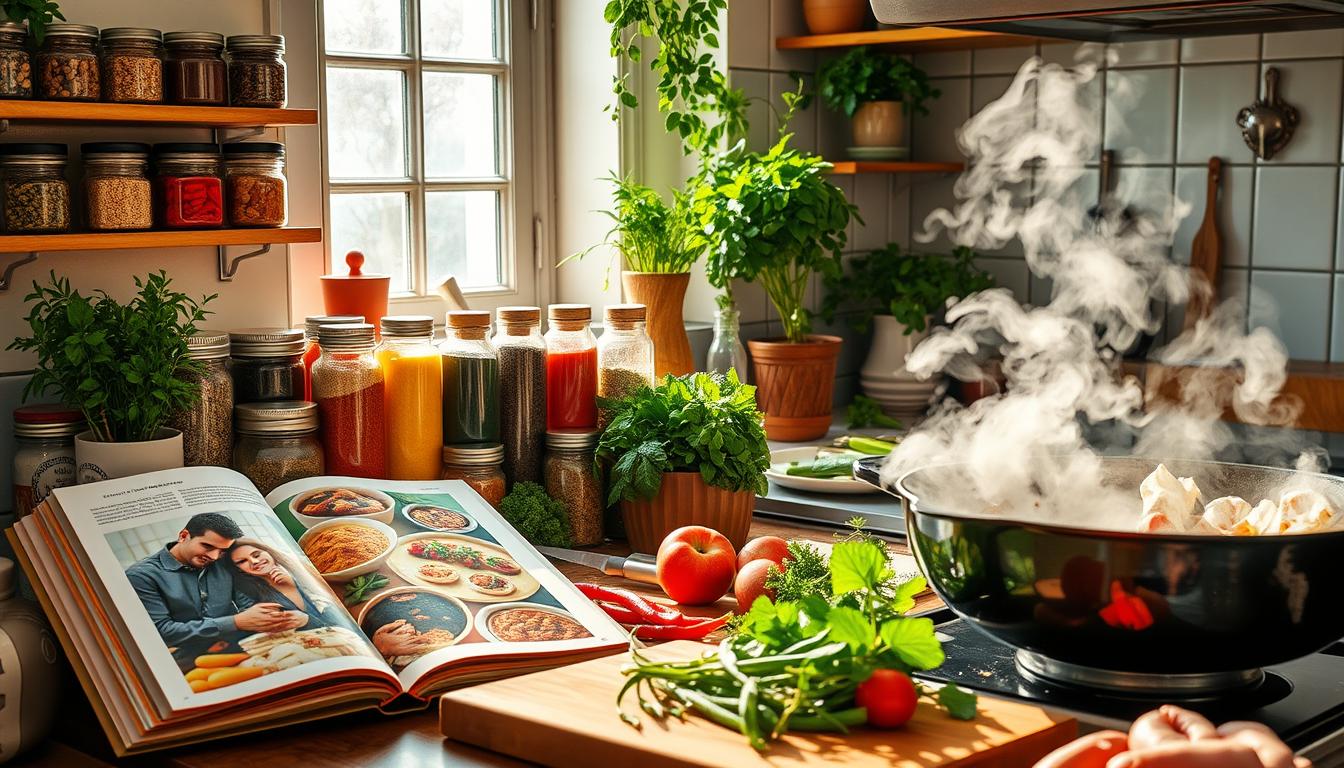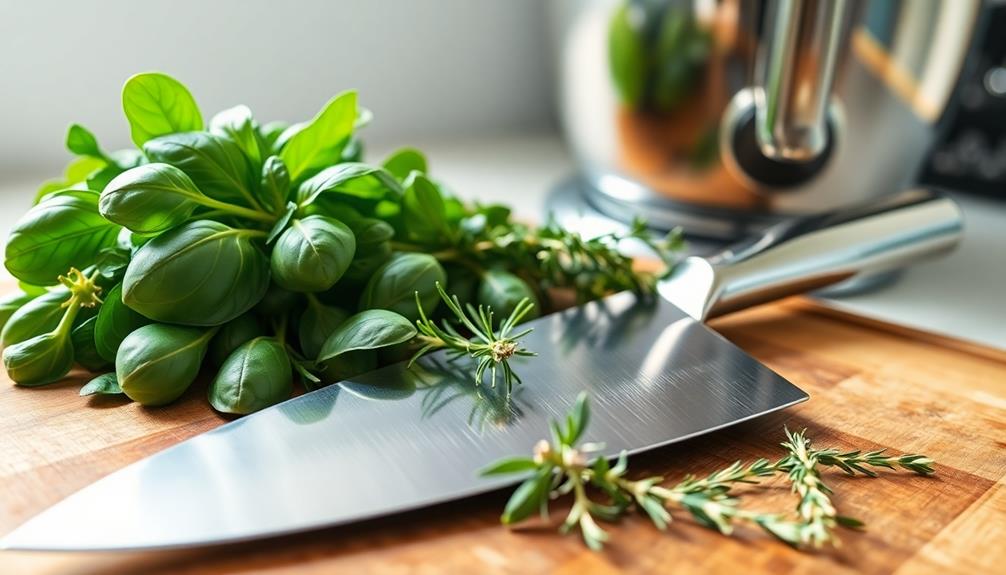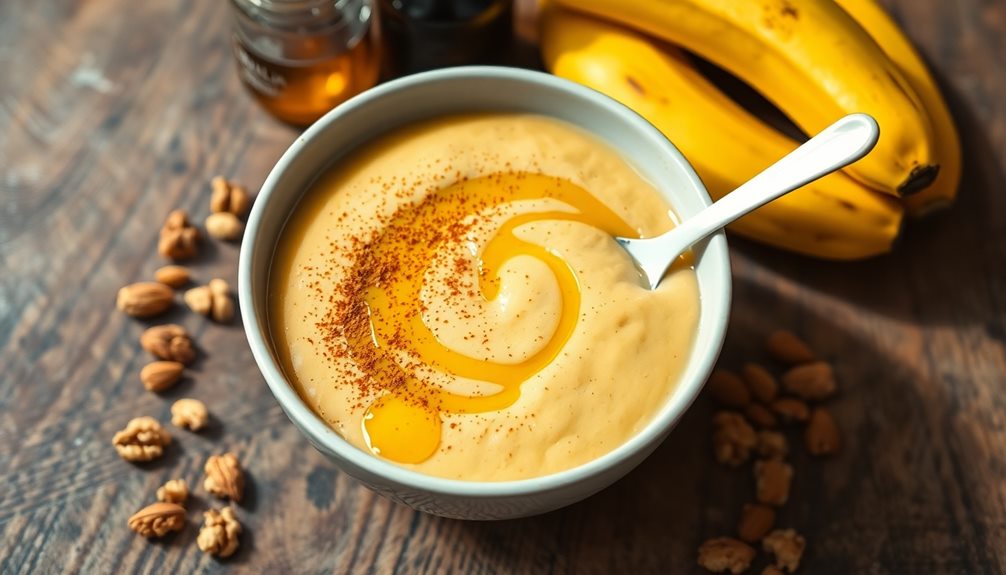Have you ever found yourself staring blankly at your pantry, overwhelmed by choices and yet unsure of what to cook? You’re not alone. In today’s fast-paced world, efficient meal planning is not just a trend; it’s a lifeline that can transform your approach to healthy eating. Imagine walking into your kitchen with a clear plan, knowing exactly what you’ll cook for the week, and feeling confident that you’re nourishing your body while saving both time and money. Meal planning is a powerful tool that empowers you to make informed choices about the foods you consume. By dedicating just a little time each week to easy meal prep, you can steer clear of last-minute junk food runs and instead whip up nutritious meals that leave you feeling energized and satisfied.
As you venture into meal planning for beginners, you’ll find that even small strategies can yield significant benefits. Statistics show that meals prepared at home can drastically cut calorie intake compared to typical restaurant meals, like the difference between a 1,500-calorie plate and a balanced, colorful meal that comes in around 700 calories. You deserve to enjoy your food, feel good, and thrive, and this guide will provide you with the insights to create healthy meal ideas that resonate with your lifestyle. In addition, meal planning can also save you time and money in the long run. By taking the time to plan out your meals, you can buy ingredients in bulk and avoid the temptation of ordering takeout on busy nights. As you continue on your journey of meal planning for beginners, you’ll also discover healthier portion control tips that can help you maintain a balanced diet and prevent overeating. With the right tools and knowledge, you can create delicious, nutritious meals that will support your overall well-being.
Key Takeaways
- Meal planning can drastically improve your diet quality by helping you include more fruits and vegetables.
- Planning meals ahead allows you to avoid the temptation of fast food and unhealthy options.
- Batch cooking and managing leftovers can save time and reduce cooking stress.
- Shopping with a list can minimize impulse buys and streamline your grocery experience.
- Utilizing in-season produce can lower grocery costs while enhancing your meal variety.
- Setting a weekly meal prep day creates a routine that simplifies planning and cooking.
- Incorporating themed meal nights can infuse joy and excitement into your dining experience.
Understanding the Benefits of Meal Planning
Meal planning offers various advantages that can transform your approach to healthy eating. By taking the time to plan meals in advance, you can significantly increase the chances of making healthier food choices. Not only does this strategy help with portion control, it also ensures that you avoid the pitfalls of unhealthy snacking that often arise from last-minute decisions.
Advantages of Meal Planning
One of the standout benefits of meal planning is its ability to encourage the consumption of nutrient-dense foods, such as fruits, vegetables, whole grains, and beans. When you prepare a weekly menu, planning healthy meal ideas becomes more straightforward, promoting a balanced diet that supports overall wellness.
- Time Efficiency: Meal planning can save significant time during the week. With nutritious meals prepped and ready to go, you reduce the time spent on decision-making and cooking.
- Cost Savings: Planning allows you to purchase items in bulk, leading to substantial savings. American families typically spend $3,000 annually on dining out. By switching to meal planning, these costs can be dramatically cut, with an average meal cost dropping from $12.75 to $3.92 per serving.
- Less Food Waste: Meal planning helps reduce food waste, which is particularly relevant as around 40% of food is wasted in America each year. By buying items with specific meals in mind, families can avoid throwing away up to $2,200 worth of food annually.
- Flexibility: A robust meal plan allows for a diverse range of dishes, preventing meal fatigue and ensuring that you enjoy your food.
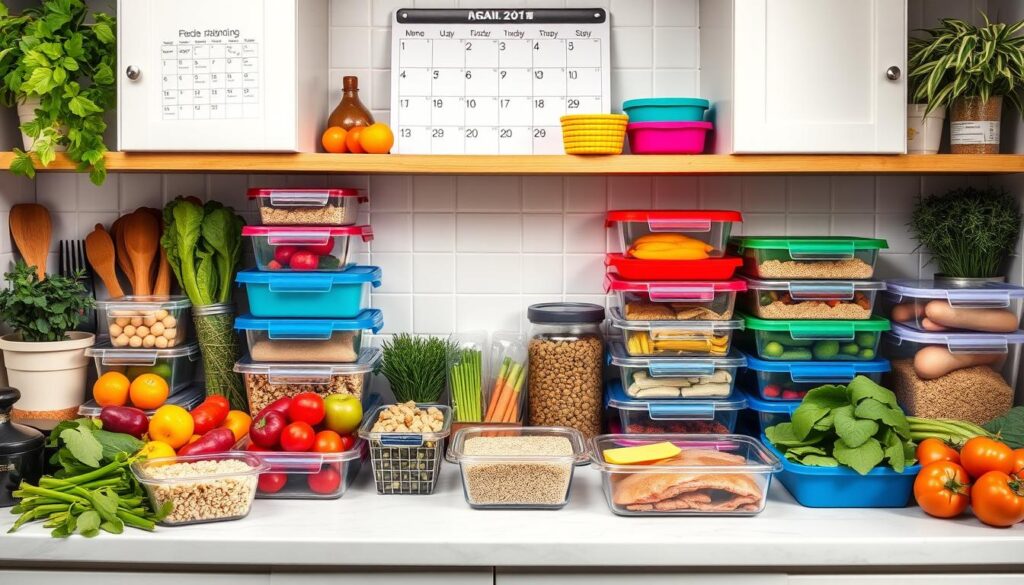
Incorporating budget-friendly recipes into your meal planning can further enhance its benefits. This combination of planning and smart shopping leads to a healthier lifestyle without breaking the bank. The impact of meal planning reaches far beyond just nutrition; it promotes efficiency and sustainability in your kitchen.
| Benefit | Description |
|---|---|
| Healthy Choices | Encourages increased intake of nutrient-dense foods |
| Cost Efficiency | Saves money by using bulk purchases and reducing dining out |
| Time-Saving | Reduces meal prep time during busy weekdays |
| Food Waste Reduction | Lessens food waste through mindful purchasing |
| Variety | Provides options for diverse meals throughout the week |
Choosing the Right Day for Meal Prep
Selecting the ideal day for meal prep can significantly enhance your cooking routine. Dedicating a specific day allows you to streamline your processes, ensuring that your meals align with your schedule. Identify a time when you can focus on easy meal prep without distractions. This structured approach can help you control your ingredients, portions, and budget while enjoying a balanced diet.
Finding Your Ideal Meal Prep Day
Consider the following meal planning tips to help you choose the best day for your meal prep:
- Assess your weekly schedule to identify a day when you have ample time.
- Sunday is a popular choice for many, providing a convenient start to the week.
- Think about incorporating meal planning templates to keep track of your tasks and process.
Starting small is essential. You might begin with prepping meals for just a couple of days, gradually expanding to a full week as you become more comfortable. This method allows you to maintain quality and variety in your meals.
To organize your meal prep, consider using a table to track your meals, grocery needs, and preparation times:
| Day | Meal | Prep Time |
|---|---|---|
| Sunday | Grilled Chicken with Quinoa and Veggies | 1.5 hours |
| Monday | Vegetable Stir-fry with Brown Rice | 1 hour |
| Tuesday | Chili with Beans | 2 hours |
Implementing these strategies can help you maintain consistency with your meal prep, ultimately contributing to healthier eating habits. Give yourself the flexibility to adjust your chosen day as your life evolves. Utilizing meal planning templates can simplify this adjustment, making your meal prep process more manageable.
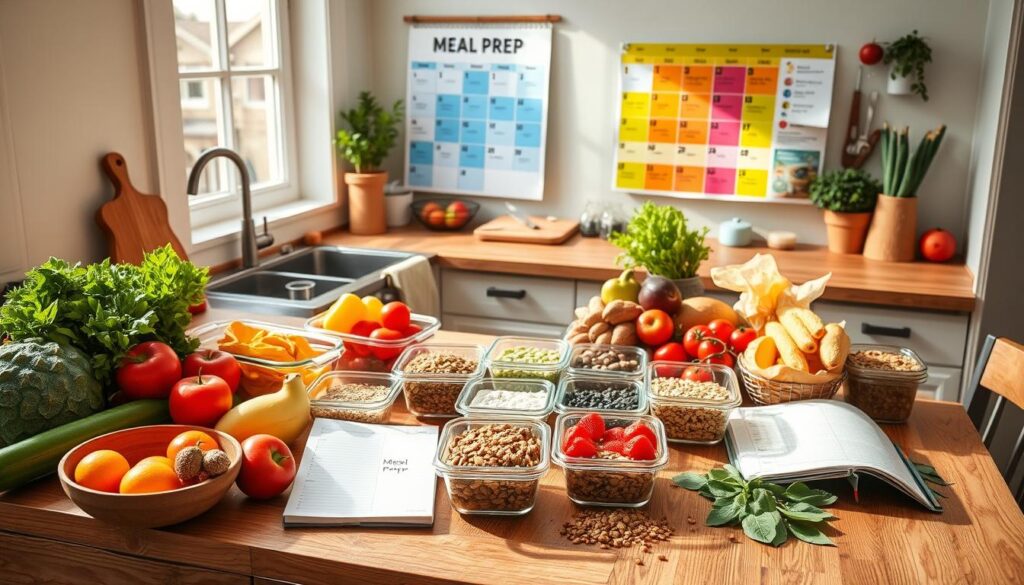
Meal Planning Tips for Beginners
Getting started with meal planning can seem overwhelming, but breaking it down makes it much more manageable. For those venturing into meal planning for beginners, starting small can establish a solid foundation. Focus on planning just a few meals each week. As you gain confidence, gradually expand your meal repertoire. Keeping your recipes organized is crucial for quick reference and planning efficiency.
Getting Started with Meal Planning
Consider each food group while preparing your meals. This approach not only ensures that meals are balanced but also encourages exploration of various healthy meal ideas. For instance, when utilizing meal prep containers, it’s helpful to portion out ingredients by food group. This way, you can create colorfully balanced meals that are easy to grab and go.
Another industry tip involves integrating seasonal and on-sale ingredients into your meal plans. This method not only enhances the flavor of your dishes but elevates cost-effectiveness. Buying in bulk or stocking up on non-perishable items during sales provides opportunities for further savings, helping you stick to your grocery budget.

Involving everyone in your household in the meal planning process can transform it into a fun family activity. Engaging family members can lead to excitement about meals and encourage healthier eating habits. Remember, meal planning aids in cutting grocery costs and can be a game-changer when managing a household budget.
| Strategies | Benefits |
|---|---|
| Start with a few meals | Build confidence over time |
| Use meal prep containers | Encourage portion control |
| Incorporate seasonal ingredients | Enhance flavor and savings |
| Engage the family | Increase excitement and involvement |
| Plan all meals and snacks | Reduce impulsive purchasing |
By implementing these foundational tips, you can embark on a rewarding journey of meal planning, ensuring both health and savings are prioritized in your culinary endeavors.
Creating a Weekly Menu Plan
Designing a weekly menu plan can transform your approach to meal preparation. By mapping out your meals for the week, you promote variety and ensure your diet includes all essential food groups. This organized method not only enhances nutrition but also adds excitement to daily dining. You can introduce themed nights like “Meatless Monday” or “Taco Tuesday” to keep the meal planning fresh and enjoyable for everyone in the household.
Designing Your Menu
Begin by drafting a master list of your favorite meals. This key step simplifies the meal planning templates you will use to create your weekly meal plan. Break down meal ideas into distinct categories, which can help generate a wider array of meal options. When everyone in the family participates, you gain valuable insights into their preferences. This collaborative approach encourages even the youngest members to engage in easy meal prep, helping them build confidence in the kitchen.
Establish a set time each week dedicated to meal planning. This habit reduces the stress around food decisions and promotes time management. Consider utilizing a visible meal plan chart, like a magnetic tear pad, placed on your refrigerator. This keeps the entire family’s meals organized and in plain sight. By regularly checking what you have on hand and updating your grocery list accordingly, you can effectively reduce food waste and save money.
For a smoother meal prep process, think about employing online tools such as Plan to Eat. These platforms allow you to organize recipes, create a meal planning calendar, and generate grocery lists, streamlining your efforts significantly. If convenience is a priority, grocery delivery services like Instacart or Amazon Fresh can be helpful, although they may come at a higher price.
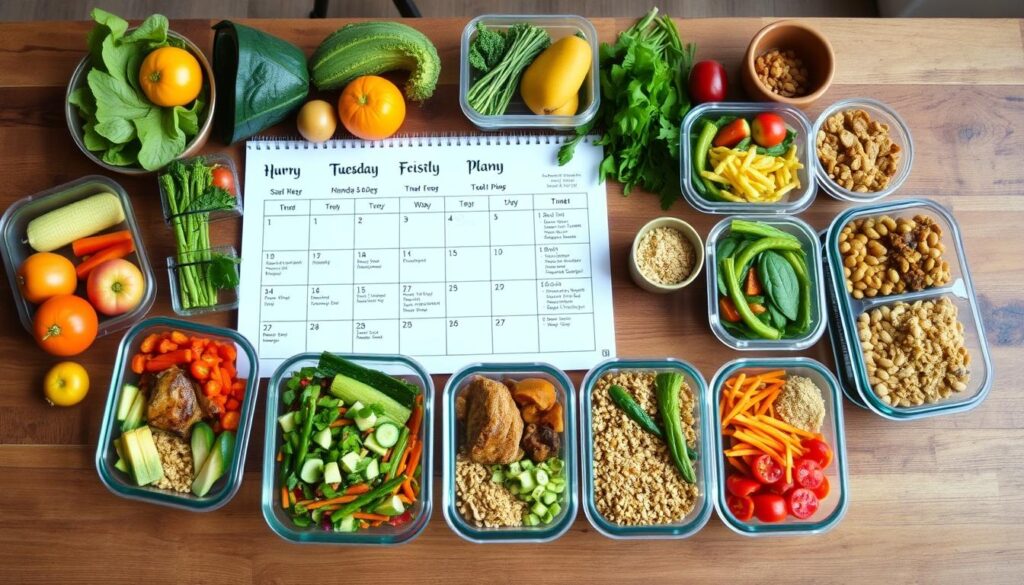
Shopping Smart: Grocery List Essentials
Crafting a well-organized grocery list acts as a cornerstone of effective meal planning. It helps you avoid impulse purchases, ensuring you stay on track with your budget-friendly recipes and overall eating goals. To effectively simplify the grocery shopping process, consider focusing on a short list that covers the essentials to support your weekly meals. This streamlined approach can save you time, money, and reduce food waste.

Building Your Grocery List
Start by categorizing the items you need. This strategy lets you pick one item from each major food category, promoting a balanced diet. An example grocery list might include:
- Fruit: Apples or bananas
- Vegetables: Spinach or bell peppers
- Proteins: Chicken breasts or canned tuna
- Starches: Brown rice or whole grain pasta
- Legumes: Lentils or black beans
- Dairy: Greek yogurt or almond milk
- Breakfast: Oatmeal or smoothie ingredients
- Pantry staples: Olive oil or canned tomatoes
- Wildcard: Your favorite snack or dessert
Consider the idea of repurposing ingredients throughout the week. By planning budget-friendly recipes that utilize versatile components, you will not only maximize their use but also minimize waste. For example, using spinach in a smoothie, an omelet, and a salad ensures that it doesn’t go bad before you finish it.
Explore methods such as creating stir-fries, baking oatmeal, or preparing hearty soups to stretch your grocery essentials across multiple meals. This thoughtful approach not only enhances your meal planning tips but also ensures that you incorporate a variety of nutritious foods without overspending.
By maintaining a well-structured grocery list and engaging in smart shopping behaviors, you pave the way toward healthier meals while keeping your finances in check.
Budget-Friendly Meal Planning Strategies
Implementing budget-friendly meal planning strategies can significantly enhance your ability to eat healthily without overspending. These strategies not only foster creative cooking but also encourage you to utilize affordable ingredients efficiently, making healthy meal ideas accessible for everyone.
Saving Money While Eating Healthy
Start by focusing on meals that are both nutritious and inexpensive. Consider these tips to help you streamline your budget-friendly meal planning:
- Plan your meals around what you already have in your pantry, refrigerator, and freezer. This practice reduces unnecessary purchases.
- Take advantage of sales and coupons by including seasonal fruits and vegetables in your recipes.
- Batch cook and prepare large quantities of meals. This approach not only decreases cooking time but also encourages making extras, which helps to minimize food waste.
- Incorporate affordable plant-based meals. Ingredients like beans and rice are both inexpensive and nutrient-dense.
- Utilize leftovers creatively. Repurpose them across different meals to keep them fresh and exciting.
- Consider roasting a whole chicken rather than buying pre-packaged meats. This will save money and offer multiple meals.
- Save time and money by lessening the use of processed ingredients. Slice your own vegetables instead of purchasing pre-cut options.
- Engage a dietitian for personalized advice on maximizing nutrition while minimizing costs.
- Spend 5-10 minutes each week planning meals to enhance energy levels and focus, which could pay off in productivity.
- Be flexible with meal choices. Given recent supply-chain fluctuations, explore new grains, fruits, and vegetables as substitutes.
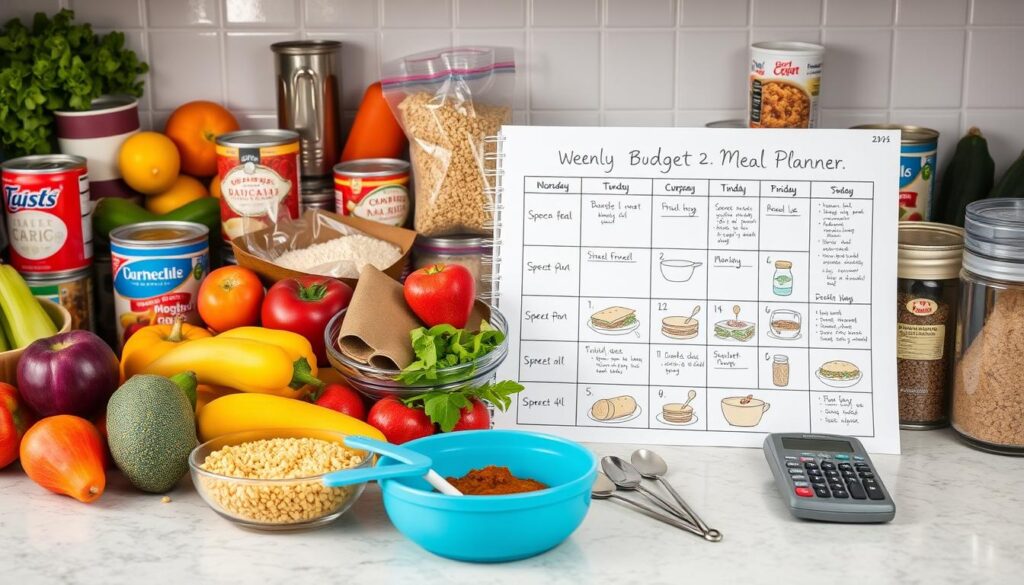
These budget-friendly meal planning techniques can guide meal planning for beginners, making it achievable to eat healthily while keeping costs low. Engaging in this practice might not only benefit your wallet but help establish sustainable eating patterns.
| Ingredient | Benefits | Cost-Effectiveness |
|---|---|---|
| Beans | High in protein and fiber | Inexpensive and versatile |
| Seasonal Vegetables | Rich in vitamins and minerals | Lower prices when in season |
| Whole Chicken | Source of protein; can provide multiple meals | More economical than parts |
| Frozen Fruits and Vegetables | Retains nutrients; easy to store | Cost-effective for out-of-season produce |
| Rice | Filling and pairs well with other nutrients | Very affordable staple |
Essential Tools for Meal Prep Success
To streamline your meal prep experience, investing in essential meal prep tools can make all the difference. By utilizing quality equipment, you can save time, improve your cooking process, and better organize your kitchen. Here’s a look at must-have items that can elevate your meal prep game.
Must-Have Meal Prep Equipment
- Meal Prep Containers: Glass Pyrex containers are ideal for storing portioned meals. These nonporous, BPA-free options are microwave, oven, and freezer safe.
- Blender: A 1200-watt powerhouse blender is perfect for creating plant-based sauces, smoothies, and soups, ensuring versatility in your meal preparation.
- Instant Pot: This versatile tool is great for batch-cooking dry beans, soups, and stews, simplifying meal prep tremendously.
- Neuro Fuzzy Rice Cooker: Known for cooking brown rice perfectly, this rice cooker uses built-in software to monitor water and rice levels.
- Stainless Steel Cookware Set: The All-Clad 10-piece set offers durability and functionality for various cooking needs, featuring skillets, saucepans, and more.
- Handheld Spiralizer: With dual stainless-steel blades, this tool effortlessly creates spiral-cut vegetables like zucchini and squash.
- Immersion Blender: Excellent for making creamy soups directly in the pot, it comes with attachments for whisking and food processing.
- Salad Spinner: This handy tool features a non-slip base and a brake button for efficient leafy green cleaning.
- Tofu Press: Easy to use and dishwasher safe, this press helps drain moisture from tofu, improving texture.
- Stainless Steel Push Chopper: Great for quickly chopping herbs and garlic, its dishwasher-safe parts ensure easy cleanup.
- Cutting Mats: Non-slip, BPA-free cutting mats provide a sharp surface for chopping and transferring ingredients easily.
- Spatulas: Essential for flipping and scraping, various types such as silicone and offset spatulas suit different cooking tasks.

Equipping yourself with these essential meal prep tools will not only enhance your cooking process but also help you maintain a healthier diet. Investing in quality meal prep containers and other kitchen essentials paves the way for a smoother meal planning journey.
| Tool | Function |
|---|---|
| Glass Pyrex Containers | Storage of portioned meals |
| 1200-watt Blender | Makes sauces, smoothies, and soups |
| Instant Pot | Batch cooks beans, soups, and stews |
| Neuro Fuzzy Rice Cooker | Cooks brown rice consistently |
| All-Clad Cookware Set | Durable cookware for various needs |
| Handheld Spiralizer | Creates spiral-cut vegetables |
| Immersion Blender | Blends soups directly in the pot |
| Salad Spinner | Cleans leafy greens efficiently |
| Tofu Press | Drains moisture from tofu |
| Stainless Steel Push Chopper | Chops ingredients quickly |
| Non-slip Cutting Mats | Provides a sharp surface for cutting |
| Spatulas | Flips, scrapes, and serves food |
Meal Planning Tips: Keeping It Organized
Staying organized is essential to sustaining an effective meal planning routine. By keeping your recipes and shopping lists in order, you’ll make your meal preparation a lot smoother. You can choose to use digital options like Google Sheets for easy syncing between devices, or opt for physical binders where you can keep your meal planning templates. A well-organized system will save you time and help you maintain focus on your healthy eating goals.
Staying Organized in Your Meal Prep
Regularly reviewing your favorite meals and tracking what works or doesn’t for you can significantly enhance your meal planning. Consider establishing a specific day each week dedicated to brainstorming recipe ideas. Keep a master list of family favorites, making it easier to decide what to cook. Think about incorporating theme nights such as Meatless Monday or Taco Tuesday; these not only streamline your planning but also add excitement to your meals.
To further simplify your grocery shopping, it’s beneficial to bring your detailed grocery list with you, ensuring you buy only what you need. By checking your pantry before shopping, you can avoid duplicate purchases and reduce food waste. A consistent organization strategy for your meal plans encourages a structured approach, helping you save both time and money while enjoying delicious, healthy meals.




